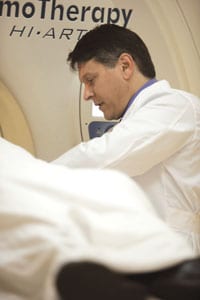Physician Stresses Importance of Backpack Safety
SPRINGFIELD — As summer winds down, many parents are focused on getting their children ready for the first day of school, and that means some serious shopping.
For many parents, a new backpack may be one of the many items on their child’s school supply list. While their choice may be based on a favorite color or cartoon character, your pediatrician may have another idea when it comes to your child’s health.
According to the American Academy of Pediatrics, backpacks that are not used properly may injure muscles and joints. This can lead to severe back, neck, and shoulder pain, as well as posture problems and other issues.
“Sometimes kids let the straps relax, and the backpack sags way below the waist. You want the backpack to rest higher up, keeping it at the very least at waist level or only slightly below. And you want to keep that backpack nice and tight and snug up top,” said Dr. Dennis Oh, a neurosurgeon at Baystate Medical Center.
Single strapped bags or wearing a backpack on one side is also a very bad idea because it places double the amount of weight on one side of the body.
“If your child continues to do this on a regular basis and uses it on his or her dominant side, then you could end up with poor posture, various physical deformities, and even scoliosis,” said Oh said.
The damage caused by wearing a backpack incorrectly doesn’t happen overnight says, he added. “The damage comes from the cumulative effects of carrying a heavy backpack day after day, week after week, month after month, resulting in muscle strain, poor posture, and, even nerve irritation, as well as a number of other health issues.”
So what are the signs of damage caused by a heavy backpack?
“Acute symptoms include back pain; achiness in the lower, mid-, or upper back; and pain in the shoulders and collarbone. The more long-term symptoms could include asymmetry, such as uneven shoulders, and poor posture,” Oh said.
While they may take time to correct, he stressed that the symptoms can be reversed. “Even the worst-case and more rare scenarios involving stress fractures will eventually heal if you detect them early enough. Once a child has reached the level of long-term effects, it will take a long time to realign and reposition the child’s posture, making it a long road to recovery.”
Here are some additional tips from Oh on how to protect a child’s posture when he or she wears a backpack:
• Choose a backpack with wide straps so that the pressure on the front and top of the shoulders is distributed more evenly, rather than with narrower straps.
• Use the waist strap. A lot of backpacks have that strap around the waist; it keeps the bag from flopping around and provides another anchor point for distributing the weight of the backpack.
• Another good option is to use a bag with wheels.
• Try to buy the smallest backpack possible. Plan ahead and see what needs to go in there and don’t buy anything that’s bigger than necessary. If it’s too big, kids will just load it up with unnecessary things when they see all that space.
• Organize the backpack to use all of its compartments.
• Pack heavier items closest to the center of the back.

